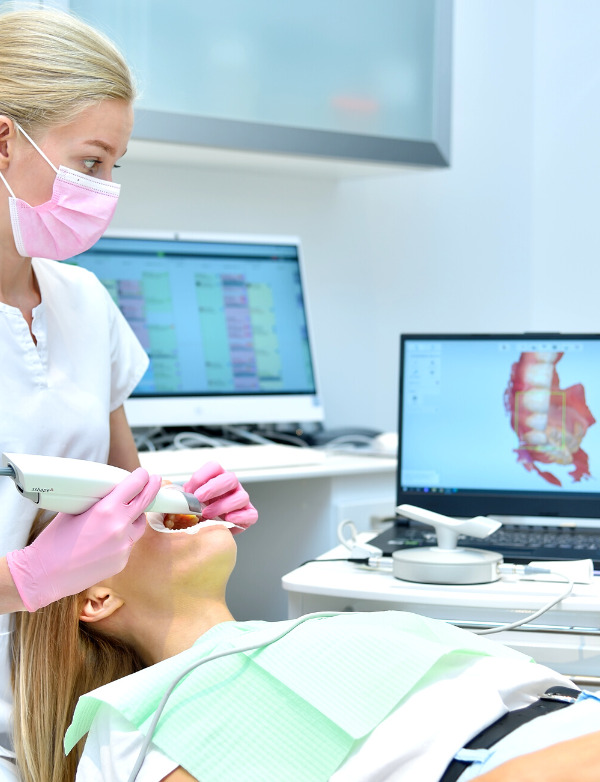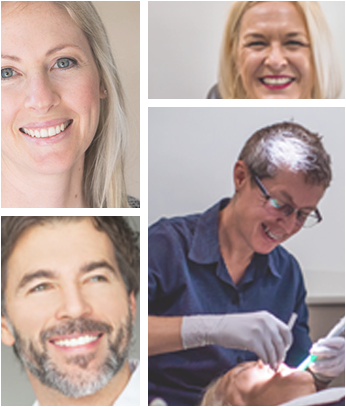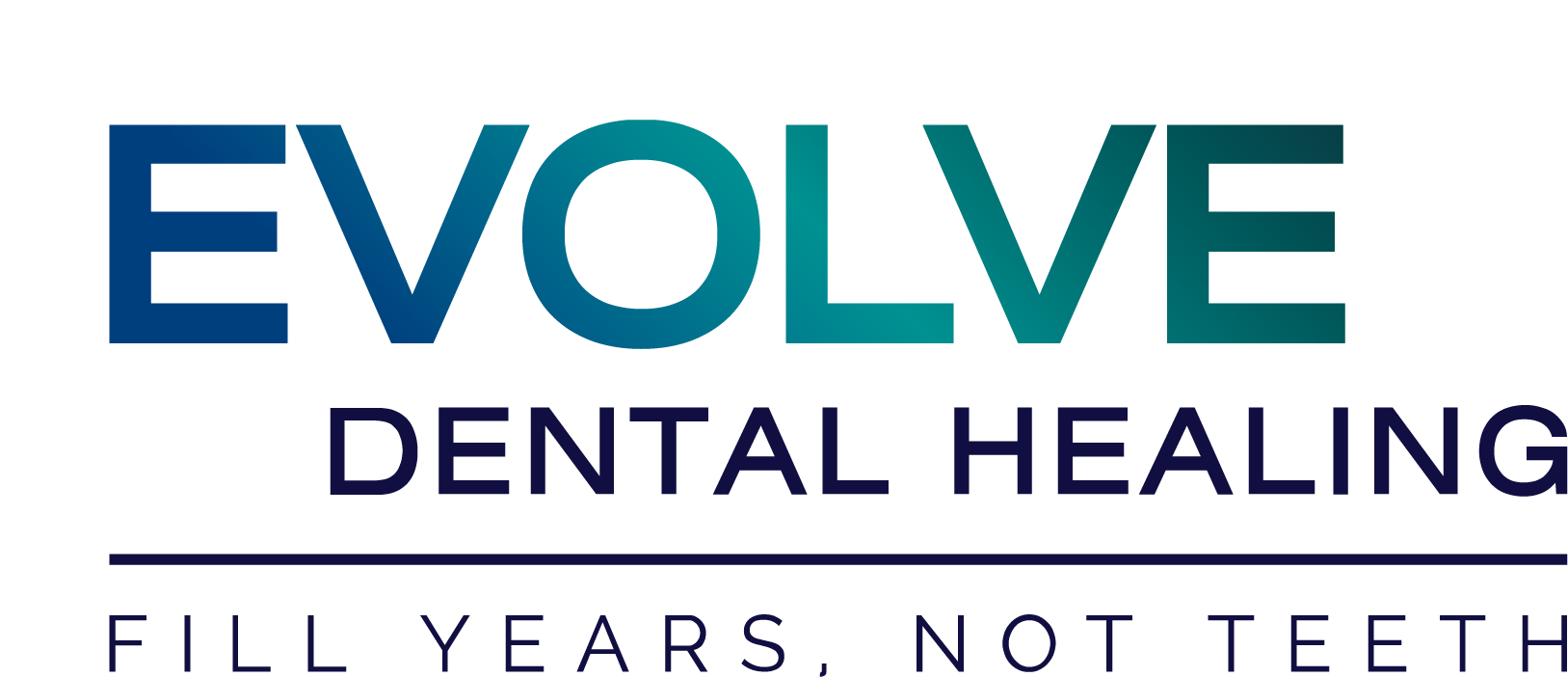Amazing Advancements In Modern Dentistry

Learn about the amazing advancements in modern dentistry that make dentistry more effective, comfortable and efficient for you and your dentist.
The field of dentistry is constantly evolving and changing to better suit patient needs. If you haven’t visited a dentist for some time, you may be surprised to discover that there are a lot of new options to keep teeth healthy and beautiful.
Technology Advancements in Modern Dentistry
Advancements in dental technology can offer you modern solutions to traditional dental problems. There are many new advancements in modern dentistry that your dentist may choose to offer, depending on the case.
The main desire is to provide you, as a patient, with leading-edge dental treatment that can be performed in a more efficient, effective and comfortable manner.
Many dental practices are already advertising their new dental technology; so let’s take a closer look at some of the more popular modern technologies that can greatly improve dental treatments.
New Technologies That Better Detect And Treat Dental Decay
Diagnodent
Diagnodent is a new, state-of-the-art device that dentists use to detect early cavities. It is a small portable device that uses sound pulse and laser to detect caries earlier than traditional methods can.
The device is particularly useful when decay is hiding in places regular X-rays can’t find (such as occlusal grooves and pits on the bite surface of your tooth).
The accuracy of diagnosing early decay is significantly higher, so treatment can commence immediately, limiting the amount of decay allowed to occur and preserving the maximum amount of natural healthy tooth structure.
Air Abrasion
Air abrasion serves as an alternative to a traditional dental drill. The air-abrasion system is primarily used to treat small cavities, but it can also be used to help repair old tooth restorations or remove superficial stains and tooth discolouration.
During air abrasion, a fine stream of particles is aimed at the stained or decayed portion of the tooth. The blast consists of air and aluminium oxide particles; this mixture is propelled toward the tooth surface by compressed air or a gas that runs through the dental handpiece. Small particles of decay on the tooth surface are removed as the stream of particles strikes them. The particles of decay are then suctioned away through a thin tube.
Compared to the traditional drilling method, air abrasion generates no heat, pressure, or vibration, thus reducing the need for anaesthesia and preserving more of the tooth’s healthy structure. Air abrasion is a safe procedure. The only precautions needed before air abrasion are protective eyewear (to prevent eye irritation from the spray) and the use of a rubber dam.
Dental Microscope
Microscopes offer dentists the ability to see micro-cracks, weakened underlying tooth structure and the proximity of the dental nerves with precise accuracy.
Microscopes also provide more accuracy in removing decayed tooth, while preserving healthy tooth structure. The microscope is an improved diagnostic tool as well as a treatment assist dental tool. Besides cavity treatment, it can be successfully used in Endodontics (root canal) and Oral Surgery
Composite materials
Composite resin materials (tooth-coloured fillings) are continually being improved and refined to better replicate tooth colours, to be easier to apply and to be more durable.
They offer the advantage over older technologies such as gold or amalgam because they can better replicate tooth colours and tooth function. In addition, the translucent qualities of the newer materials have helped to produce beautiful natural-looking results.
Composite resins rely on the bonding technique and are used today in many restorations such as fillings, veneers, inlays and even some dental crowns or bridges.
Dental Implants Technologies
Today, dental implants are the state-of-the-art tooth replacement systems and are now more common than in years past. In the past, implants often failed. Now, the typical life of an implant is about 15 years or longer. About 95% of implants today are successful.
Dental implant technology continues to improve. Mini-implants can now accommodate small tooth replacements. The industry has also focused on reducing treatment time and some implants can be placed immediately after tooth extraction as opposed to waiting six months after extraction. Here are some modern technologies that may improve dental implant treatments:
CT Scan
The CT Scan or CAT Scan has become a vital tool in the diagnosis of dental implant position and placement. A CT Scan (computed tomography) is an imaging method that uses x-rays to create pictures of cross-sections of the body. Modern CT scan software can provide three-dimensional images of a high quality and extreme complexity.
The CT scanning software allows the dentist to determine if bone quantity and quality exist and can be used to virtually place dental implants using the computer program prior to any surgical intervention. Thus, it eliminates possible manual placement errors and matches planning to prosthetic requirements.
CT scan technology has become increasingly specialized in dentistry as implants have become the standard of care for tooth replacement.
Cone-beam computed tomography (CBCT)
A CBCT is a compact, faster and safer version of the regular CT. Through the use of a cone-shaped X-Ray beam, the size of the scanner, radiation dosage and time needed for scanning are all dramatically reduced.
The CBCT produces 3D-type images that let the dentist look at mouth structures from different vantage points; it can show the width of mouth structures in addition to their height. It also can show things like cysts and impacted teeth, as well as nerves and arteries that might make the implantation more challenging.
Digital X-Rays
Digital X-rays are faster and contain less radiation than traditional X-rays. This modern dental technique is also more comfortable and allows dentists to find problems with your teeth, mouth, and jaw faster. Digital radiographs offer a way to capture dental images through a sensor that processes the image onto a computer screen.
When a patient has a digital X-ray done, the image appears on the computer in a matter of seconds. The dentist has the possibility to zoom into the image or perform various measurements with the help of a computer software.
Digital X-rays are less harmful to patients as they contain up to 90% less radiation compared to traditional X-rays.
Intraoral Camera
The intraoral camera is a small, lightweight tool that can produce accurate images of the teeth and the supporting structures. This technology allows dentists to conduct a thorough checkup of the mouth and better assess their patient’s oral care needs. It can be also used to obtain well-defined pictures of hard to see places within a patient’s mouth.
The camera also allows dentists to show these images to patients while assessing and educating the patient’s needs. It can be used by your dentist or a dental technician that might be involved in your treatment, to see tooth defects or some oral lesions.
Intraoral Scanner
The digital scanner or intraoral scanner is generally used by the dentist to make a digital impression after preparing a tooth for a crown, inlay or veneer. With digital impressions there is no need to have a mouthful of impression materials.
The digital impression is sent to the corresponding designing software where the dentist or dental technician can construct the designed tooth restoration on a screen. It is also used in orthodontics and to make whitening trays, nightguards and sleep apnoea appliances.
An intraoral scanner can also provide a digital map of the tooth and create a 3-D replica model of the dental structure. This helps in an accurate colour analysis for cosmetic restorations made in a dental laboratory such as porcelain veneers, crowns, and bridges.
Dental Lasers
Laser dentistry uses light energy as their method of operation, resulting in a shortened and almost painless healing period.
Lasers are used to improve efficiency and eliminate discomfort in a number of dental procedures, including cavity detection and treatment, reducing tooth sensitivity, treatment of benign tumours, cold sores, gummy smile changes, crown lengthening, and teeth whitening. The laser can act differently depending on the procedure performed:
- When a laser is used for a surgical procedure or a cavity preparation, it acts as a cutting instrument or a vaporizer of tissue that it comes in contact with.
- When a laser is used for cavity detection, the decayed teeth glow when exposed to the wavelength of the diode laser, resulting in higher readings on the display compared to healthy teeth.
- When a laser is used for “curing” a filling, it helps to strengthen the bond between the filling and the tooth.
- When the laser is used in teeth whitening procedures, it acts as a heat source and enhances the effect of tooth-whitening agents.
CAD/CAM Technology
CAD/CAM (computer assisted design, computer assisted manufacture) technology allows for the fabrication of dental restorations through computerized technology.
The CAD/CAM systems can improve the design and creation of dental restorations, including crowns, veneers, inlays and onlays, fixed bridges, dental implant restorations, zirconia frames, dentures and even orthodontic appliances.
Endodontic Systems
Root canal therapy implies a series of procedures that aim to shape, clean and decontaminate all the root canals of an infected tooth. If the root canal is performed using the traditional method, all the operations are executed manually, using a variable number of endodontic files.
However, in modern Endodontics, a wide variety of electronic endodontic systems are available to help the dentist. These systems have the advantage of monitoring the root canal before, during and after instrumentation, hence greatly increasing the accuracy and safety.
The rotatory systems have many important advantages:
- Preparing the root canals at low speed using specific hand-pieces
- Shaping and cleaning root canals is done while monitoring the position of the files inside the canal
- The root canals are measured using the electronic apex locator. The apex locator is an electronic device used to determine the position of the apex and thus determine the length of the root canal space. The position of the files and information about the length and shape of root canals appear on a screen that is attached to the device.
Painless Dentistry
Many patients are afraid of the dentist because they think that having treatment will hurt, while others are scared of needles and injections. The good news is that more and more dentists use new and modern equipment to make dental treatment and anaesthesia an acceptable, normal part of life.
· The Wand
The Wand is a computerized tool that can deliver anaesthesia in a slow and methodical manner. The slow and gentle delivery associated with The Wand often makes injections painless. The delivery holder is small and easy for the dentist to use.
The Wand can be more comfortable than the syringe.
Oral Cancer Screening
· OralID
OralID is a brand new oral cancer screening system that uses incandescent light so your dentist can see abnormalities that may not be apparent or visible to the naked eye.
This new form of technology is effectively used to detect early forms of cancer or disease during an oral cancer screening.
Orthodontics – Clear Aligners, Invisalign
Invisalign is a popular brand of clear aligners and an alternative to traditional dental braces. Although Invisalign is can be more limited in terms of treating serious orthodontic cases, it is very effective for over 80% of orthodontic issues.
Invisalign or clear aligners like Spark consists of a series of clear (invisible), customised removable aligners. Each set of aligners is worn for approximately one week and then replaced with the next set. As patients progress through the series of aligners, teeth will begin moving, little by little, gradually towards the projected final position.
For the latest advances in modern dentistry
Evolve Dental Holistic Dentist Brisbane – Modern Dentistry
Modern dentistry is now backed by many advances in technology to improve patient comfort, efficiency and effectiveness of treatment, diagnostics and patient care.
For modern dentistry with the latest advances in treatment with good old-fashioned values and care give us a call today 07 3720 1811
-
Dr. Rachel Hall
Rachel is the founder and principal dentist at Evolve Dental Healing with over 30 years experience, practising holistically since 2001. Not your typical dentist, Rachel is a passionate opinion leader, challenging convention to empower people to make better dental and health choices, helping thousands to have healthy natural smiles. A respected writer and presenter on holistic dentistry, health and wellness it is Rachel’s mission to revolutionise the way people look at their dental health.
Talk to us for more details and information
CONTACT US
67 Kenmore Road
Kenmore Queensland 4069
Phone: 07 3720 1811
Fax: 07 3720 1899
Email: info@evolvedental.com.au
OPENING HOURS
Monday – Friday: 7:30am – 5:30pm
References and Citations Mercury & Amalgam Fillings




